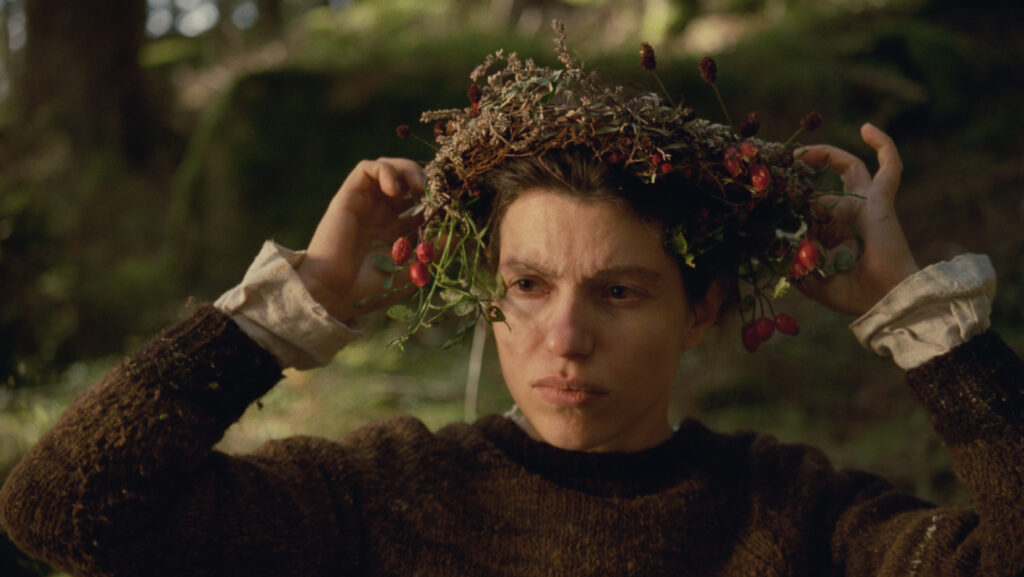The final feature I had the opportunity to screen for Final Girls Berlin Film Festival was an absolute sleeper hit. I was a massive fan of Goodnight Mommy, and I organized four different viewings in college with friend groups to weed out who I could actually recommend movies to and who not to. For some reason, I didn’t keep up with Veronika Franz and Severin Fiala’s career post-Goodnight Mommy (and yes, I completely ignored the remake). When I learned that their latest film was screening at FGBFF and it was about an obscure historical fact that I had never heard of…I was sold.
The Devil’s Bath follows Agnes (Anja Plaschg), a young woman recently married to Wolf (David Scheid). Wolf buys them a house, and their happily ever after should be kickstarted with a night of child-rearing. Only Wolf is a closeted man, and his inability to consummate their marriage starts to drive a wedge between them. As time passes, Agnes becomes less and less happy with her lot in life and starts looking for a way out. Unfortunately, the only way she sees fit to escape life is through a highly controversial method of suicide by proxy.
I’ve stated time and time again that period pieces don’t really do it for me, especially ones that deal heavily with historical fact. Before we talk about The Devil’s Bath, it’s important to look at the real-life history behind the film. The film is based on Suicide by Proxy in Early Modern Germany: Crime, Sin and Salvation by Kathy Stuart, which chronicles a 17th and 18th-century practice where people would kill someone, usually a kid, in order to be put to death by authorities. This suicide workaround would ensure an opportunity for one final confession, thus granting a chance for God’s forgiveness and their spot in Heaven.
While there’s an extreme historical background to this film, it’s much more than an exploration of a worse time in history. At its core, The Devil’s Bath is a hellish rebuke of societal norms of its time and the church in general. Rather than being able to escape a life of unhappiness, Agnes is forced to live a life she doesn’t deserve. She is a woman forced into then-societal norms who reaches a tipping point when her closeted, emotionally unavailable husband can’t put a baby in her. Not only do Veronika Franz and Severin Fiala excel in writing Agnes, but Anja Plaschg also gives one of the greatest performances I’ve seen in modern horror.
The Devil’s Bath is a bleak retelling of a day in the life of a lost time, without Kathy Stuart’s excellent research, this tragic past could have easily been forgotten by time. Franz and Fiala craft an effortlessly beautiful picture wrought with a deliberate insistence of impending dread. Cinematographer Martin Gschlacht captures the wretched beauty of Agnes’s story in a captivatingly pessimistic way. Some may criticize The Devil’s Bath for being too slow for its own good, but the film’s pacing perfectly mirrors Agnes’ woeful fate.
This film will not be for everyone. But I implore you to sit with the film, let it bubble, and go for the ride. Even if a two-hour runtime and subtitles are a turnoff for you, The Devil’s Bath delivers an incredibly poignant tale.
The Devil’s Bath is currently streaming on Shudder, and it’s absolutely worth your time.
